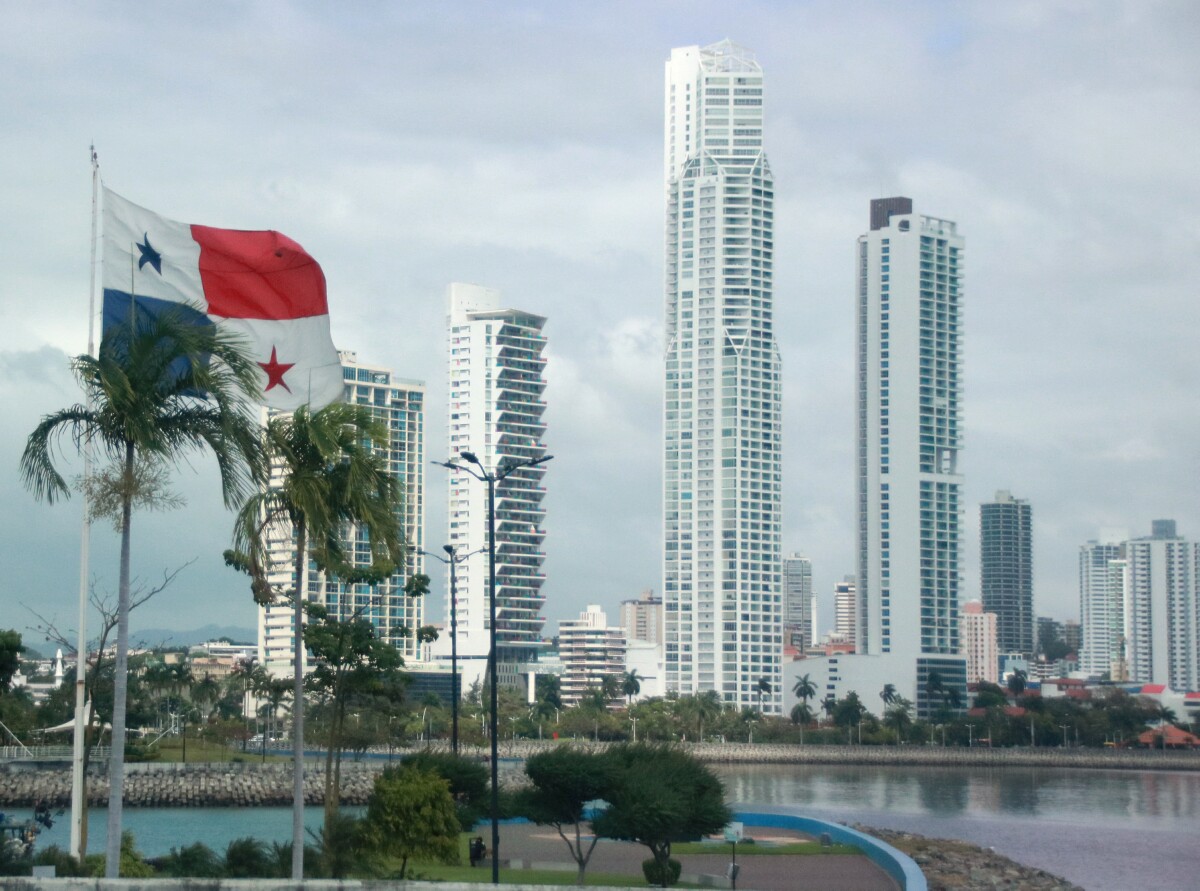On Day 3, after visiting Casco Viejo, the tour did a quick drive through the modern skyscrapers and condos of Panama City. Then we traveled to the
Amador Causeway, which connects the mainland to three islands, Naos, then Perico and finally Flamenco, in the Pacific Ocean, for lunch and later
a chance to walk around Flamenco Island.
But the main reason for visiting Panama City is see the Panama Canal. We drove to the Miraflores Locks, about 14 km. from the city. Miraflores
is one of three sets of locks along the Panama Canal, with Pedro Miguel Locks just a few km. north, and the Gatun Locks on the Atlantic side of the canal.
It takes 8-10 hours for a ship to cross the canal ... but it would take about 22 days for the ship to go around South America. The cost ...
$300,000 to $500,000 U.S. for a cargo ship. But in June 2016, the new super locks opened for mega ships that are way to big for the original locks. The
cost for their passage through the canal ... reportedly $500,000 to over $1 million U.S. The new locks can handle cargo capacity about 2.8 times the original locks.
Creating the canal was an arduous and deadly task. The first attempt to construct a canal in Panama (which was part of Colombia at the time) started January 1,
1881, by a French company who made a bundle constructing the Suez Canal. Although the Panama Canal needed to be only 40 percent as long as the Suez Canal, it
was much more of an engineering challenge due to the combination of tropical rain forests, debilitating climate, the need for canal locks, and the lack of any
ancient route to follow. The French effort went bankrupt in 1889 after reportedly spending US$287,000,000, with an estimated 22,000 men dead from disease and
accidents, and the savings of 800,000 investors lost. The Americans took over in 1903, as Panama gained independence from Colombia, paying the French only $40
million for their equipment and finished excavations, and the new Panama got $10 million. They brought in their own equipment, decided to use locks at key
points instead of the sea level approach of the French which needed a massive amount of digging. The Americans completed the project is just over 10 years,
and the canal opened for business August 15, 1914.
|

Above: The sign on Flamenco Island.
|
|
1 to 3 show our tour van leaving the modern Panama City on the Cinta Costera highway, looking at the Casco Viejo and in #2, the old prison.
4 and 5 show us driving on the Amador Causeway.
6 and 7 show our group enjoying the Bucaneros Restaurant on Flamenco Island.
8 to 12 show the Flamenco Marina harbour.
|

|
|